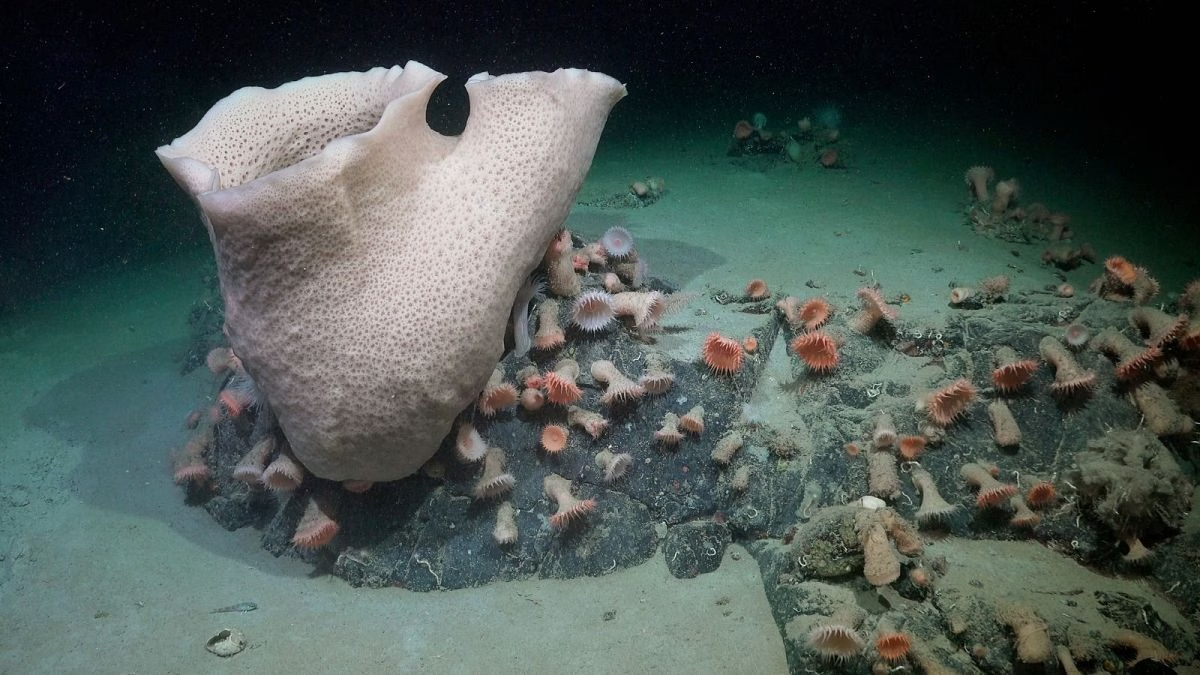A fortunate discovery has provided new insights into the thriving ecosystems that exist beneath the floating sections of the Antarctic ice sheet. Scientists aboard the Schmidt Ocean Institute’s research vessel, Falkor (too), stumbled upon this rare opportunity while studying the interface between ice and sea. When an iceberg, named A-84, the size of Chicago, broke away from the George VI Ice Shelf, the team seized the moment to explore the previously inaccessible area.
Dr Patricia Esquete, co-chief scientist of the expedition from the University of Aveiro in Portugal, shared that the team did not expect to discover such a beautiful and thriving ecosystem beneath the ice. The animals found, estimated to be decades or even centuries old, indicate the longevity of these communities.
The team conducted a detailed study of the geology, physical oceanography, and biology beneath the ice shelf, using the remotely operated vehicle SuBastian. They observed flourishing ecosystems at depths of 1,300 meters, including large corals and sponges supporting a diverse array of animal life, with several suspected to be new species.
The expedition provides new insights into how ecosystems can function in submerged depths, offering a glimpse into the mechanisms that sustain life beneath Antarctic ice shelves. While deep-sea ecosystems typically rely on nutrients from the surface, these Antarctic ecosystems have been cut off from surface nutrients for centuries and may rely on ocean currents for sustenance.
The discovery highlights both the excitement of research at sea and concerns about climate change. Iceberg calving is a normal occurrence, but the process is accelerating due to climate change, contributing to sea-level rise worldwide. The research team also collected data on the ice sheet’s past behavior and the impact of glacial meltwater on the region, indicating high biological productivity and strong meltwater flow.
The findings of this expedition are crucial for understanding the recent changes and providing context for projections of future change, enabling the development of informed policies. As the team continues to analyze the data, new discoveries are expected, making this a significant contribution to our understanding of the Antarctic ice shelves.
Source: https://www.euronews.com/green/2025/03/23/scientists-were-in-antarctica-when-a-giant-iceberg-broke-free-heres-what-they-found-in-its





